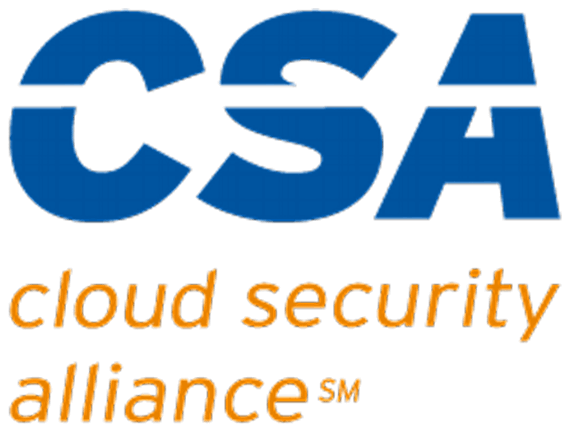Flexibility is no longer a perk in the modern work environment—it’s a necessity. Whether driven by necessity or strategy, remote work is here to stay. Providing secure and efficient access to digital resources is critical for small businesses aiming to support hybrid or fully remote teams. That’s where Virtual Desktop Infrastructure (VDI) comes in.

VDI offers a streamlined, secure way for businesses to deliver desktop environments to employees, regardless of location. It enables workers to access a consistent, company-managed computing experience from virtually any device with an internet connection. For small businesses, VDI represents a powerful tool to support remote work while maintaining control, security, and performance.
In this article, we’ll explore how VDI can enable remote work, dive into its implementation’s practical and security considerations, and explain why strong IT support is essential to success with this technology.
What Is Virtual Desktop Infrastructure (VDI)?
VDI is a technology that hosts desktop environments on a centralized server. Instead of creating a complete environment on each user’s device, VDI allows users to connect to virtual desktops from their endpoints—be it a home laptop, tablet, or even a thin client. These virtual desktops are managed in a centralized data center or cloud environment, ensuring consistency, security, and easy maintenance.
There are two main types of VDI:
- Persistent VDI, where users have a personal desktop that retains changes and customizations between sessions.
- Non-persistent VDI, where users receive a fresh, standardized desktop every time they log in.
Each has its use cases depending on the business’s needs, but both offer enhanced manageability and security over traditional desktop deployments.
Why VDI Makes Sense for Remote and Hybrid Work
For small businesses exploring or expanding remote work policies, VDI offers multiple advantages:
1. Security First
One of the biggest concerns with remote work is data security. When employees work from personal or unmanaged devices, there’s a higher risk of data breaches, malware infections, and loss of sensitive information. VDI mitigates these risks by centralizing data in a secure environment—no sensitive data is stored on the local device. Access can be quickly revoked if a device is lost or stolen with no risk of data leakage.
2. Standardized IT Experience
With VDI, employees get a consistent desktop experience wherever they work. This consistency makes support more manageable, reduces training time, and ensures compatibility with critical business applications. IT teams can push updates, patches, and policies across all virtual desktops simultaneously, minimizing downtime and maximizing productivity.
3. Cost Efficiency
While VDI requires an upfront investment in infrastructure or cloud services, it can lead to long-term savings. Businesses can extend the life of existing hardware or use thin, lower-cost clients, and IT administration becomes more efficient through centralized management. Cloud-based VDI solutions offer flexible pricing, allowing small businesses to scale resources up or down as needed.
4. Business Continuity and Resilience
A key lesson from recent years is the importance of adapting quickly. VDI enables businesses to keep running in the face of disruptions—whether a public health crisis, a natural disaster or simply an employee who needs to relocate. Employees can access their virtual desktops from anywhere with a secure internet connection, ensuring that work doesn’t stop when the office is out of reach.
Practical Considerations When Implementing VDI
Implementing VDI isn’t just about installing software—it requires thoughtful planning and IT expertise. Here are some of the key considerations small businesses should keep in mind:
1. Infrastructure Requirements
VDI solutions can be deployed on-premises, in the cloud, or via a hybrid approach. Each has pros and cons. On-premises deployment gives you maximum control but requires significant upfront investment in servers, storage, and networking. Cloud VDI (e.g., Microsoft Azure Virtual Desktop) offers more flexibility and scalability but comes with ongoing subscription costs and dependency on internet connectivity.
Bandwidth is also a critical factor. A poor internet connection can hinder VDI performance and user experience, so it’s essential to assess your users’ connectivity and plan accordingly.
2. Licensing and Software
VDI implementations often require additional licensing for virtualization platforms (like VMware Horizon or Microsoft Remote Desktop Services), operating systems, and user access. Ensuring compliance and cost-efficiency requires careful planning and may benefit from the expertise of an IT partner familiar with licensing models.
3. Endpoint Management
While VDI reduces the complexity of endpoint management, it doesn’t eliminate it. You still need to ensure that endpoint devices can run VDI clients and are kept secure. Using managed thin clients or company-issued laptops with Mobile Device Management (MDM) software may be the best choice for some businesses.
4. User Training and Support
Like any new technology, VDI can have a learning curve. Employees may need training to become comfortable with the new environment. Additionally, ongoing support is essential to quickly resolve issues and minimize disruptions. Responsive IT support— in-house or via a managed services provider—is key to a successful rollout.
Security Considerations: Not Optional
Security should never be an afterthought in a VDI deployment. Fortunately, VDI inherently offers stronger security than many traditional setups. But to fully leverage these benefits, businesses should implement:
- Multi-Factor Authentication (MFA): Adding a second layer of verification significantly reduces the risk of unauthorized access.
- Encryption: All data in transit and at rest should be encrypted to protect sensitive information.
- Regular Patching and Updates: VDI centralization makes enforcing regular system updates and security patches across all desktops easier.
- Access Controls: Role-based access ensures that employees can only access the data and applications necessary for their role.
- Monitoring and Logging: Tracking user activity helps detect suspicious behavior and supports compliance efforts.
Small businesses often assume they’re not a target for cyberattacks—but attackers frequently target smaller organizations precisely because they tend to have weaker defenses. VDI, when appropriately implemented, can be a significant step toward strengthening your company’s cybersecurity posture.
Why Strong IT Support Is Crucial
VDI is a powerful technology, but it’s not plug-and-play—especially for small businesses without large internal IT departments. A successful VDI deployment requires:
- Infrastructure planning
- Network optimization
- Security strategy
- User support
- Ongoing maintenance and updates
A knowledgeable, responsive IT team is critical to getting these elements right. A weak or overstretched IT function can lead to poor performance, security risks, and unhappy users.
This is where partnering with an experienced managed service provider (MSP) can make all the difference. An MSP like Datacate can assess your business’s needs, recommend the right VDI solution, handle implementation and support, and ensure your remote workforce is secure, productive, and well-supported.
Datacate Is Your Partner in Secure Remote Work Enablement
At Datacate, we specialize in helping small businesses build robust IT environments that support modern work styles. Whether you’re exploring VDI for the first time or need help optimizing an existing deployment, our team guides you every step of the way. We offer expert advice, tailored infrastructure solutions, and responsive support to help you unlock the full potential of remote and hybrid work—safely and efficiently.
Let us help you transform your IT into a competitive advantage. Contact us today to learn more about how Datacate can support your remote workforce with secure, scalable Virtual Desktop Infrastructure solutions.




